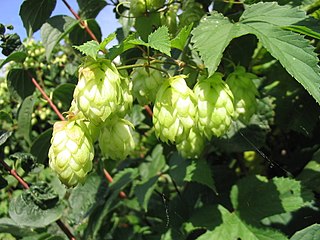
The Flemish Parliament constitutes the legislative power in Flanders, for matters which fall within the competence of Flanders, both as a geographic region and a cultural community of Belgium.

Redbournbury Mill, is a Grade II* listed flour mill in Redbournbury, Hertfordshire, England, which is thought to have been first built in the early 11th Century. Having operated as watermill on the River Ver, the mill is now powered by a diesel engine.

Steenwerck is a commune, in French Flanders, in the Nord department in northern France. It is located about 25 km (16 mi) north of Lille and in 2013 had a population of 3519. People from Steenwerck are known as Steenwerckois.

Doel is a subdivision of the municipality of Beveren in the Flemish province of East-Flanders. It is located near the river the Scheldt, in a polder of the Waasland.

Paston Great Barn is a medieval barn near Paston Hall on the southeast edge of the village of Paston, in northeast Norfolk. It is owned by the North Norfolk Historic Buildings Trust. It dates from 1581 and is associated with the Paston family. It is a Scheduled Ancient Monument and a grade II* Listed Building. It is also a 1-hectare (2.5-acre) biological Site of Special Scientific Interest, a National Nature Reserve and a Special Area of Conservation. It is in the Norfolk Coast Area of Outstanding Natural Beauty.
The National Museum of Rural Life, previously known as the Museum of Scottish Country Life, is based at Wester Kittochside farm, lying between the town of East Kilbride in South Lanarkshire and the village of Carmunnock in Glasgow. It is run by National Museums Scotland.
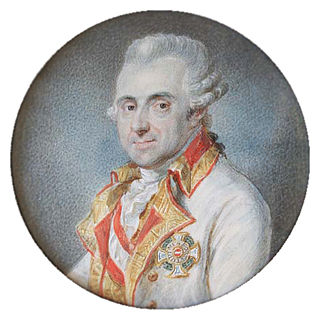
Joseph Jean François, count de Ferraris was an Austrian general and cartographer. He married to the daughter of Charles, 2nd Duke d'Ursel.

Oakhanger is a village in the East Hampshire district of Hampshire, England. Its nearest town is Bordon, which lies 1.7 miles (2.7 km) east, of the B3004 road. The village is part of the parish of Selborne, which covers an area of 7,915 acres (3,203 ha). The nearest railway station is Alton, which is 3.8 miles (6.1 km) northwest of the village, although Oakhanger formerly had its own military railway station, Oakhanger Halt railway station on the Longmoor Military Railway, until its closure.

Bassemberg is a French commune in the Bas-Rhin department in the Alsace region of north-eastern France.

Oxon Cove Park and Oxon Cove Farm is a national historic district that includes a living farm museum operated by the National Park Service, and located at Oxon Hill, Prince George's County, Maryland. It is part of National Capital Parks-East. It was listed on the National Register of Historic Places in 2003.

Sint-Agatha-Rode, named after the third-century Christian martyr Saint Agatha of Sicily, is a Dutch-speaking village in Belgian province of Flemish Brabant and lies within the district of the town of Huldenberg. Historically Sint-Agatha-Rode was an independent municipality (Gemeente) until the merger of Belgian municipalities in 1977 when it was joined to the town of Huldenberg.
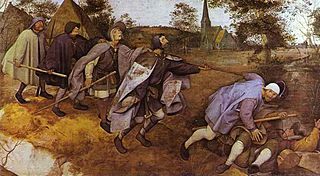
Itterbeek is a historical village in the province of Flemish Brabant, Belgium, and since 1977 a submunicipality of Dilbeek.

Great Manson Farm is a property on the northern outskirts of Monmouth, Monmouthshire, Wales, in the Buckholt area. It is in the Manson Lane neighbourhood, within the electoral division of Dixton with Osbaston. During the course of the nineteenth and twentieth centuries, members of the Clarke, Goode, Clark, Dampier, and Morgan families resided at Great Manson Farm, at which time the reported size of the farm varied from 170 to 200 acres. The property is remarkable for the presence of three grade II listed buildings, including a barn with medieval origins.
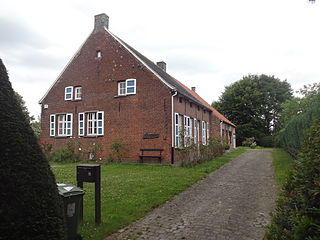
The Schaliehoeve is an old farmhouse in the Flemish village Boechout, located on the Heerbaan.

The Taaienberg is a hill in the municipality of Maarkedal, in the Belgian province of East Flanders. With its top at 90 m, its is one of many hill formations in the Flemish Ardennes, in the south of East-Flanders. The slopes of the hill are paved in cobbles; in 1993 they were repaved with the original stones. The cobbled climb is one of the regular sites in Flemish cycling races in springtime. In 1995 the road of the Taaienberg was classified as a protected monument.
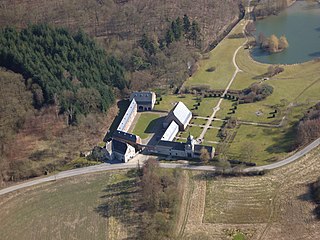
Grandpré Abbey is a former Cistercian abbey located at Faulx-les-Tombes, in the province of Namur, Belgium. The only remains of the abbey are the gatehouse and the attached range at the main entrance, the farm buildings and the mill, once powered by the Samson brook, which crosses the site.

Bradfield Dale is a rural valley which lies 12 km west-northwest of the City of Sheffield in England. The valley stands within the north eastern boundary of the Peak District National Park just to the west of the village of Low Bradfield. The dale is drained by the Strines Dike which becomes the Dale Dike lower down the valley, these being the headwaters of the River Loxley. The dale contains two reservoirs Strines and Dale Dike, and a third Agden Reservoir stands in a side valley just above Low Bradfield. The dale is characterised by agricultural land interspersed with farming and residential buildings. It is approximately 5 km in length from its foot at Low Bradfield to its head on Strines Moor.

Château de Beurthé or Château de Steinbach is a castle situated in the middle of the town centre of Steinbach, overlooking a vast park and the Steinbach river.
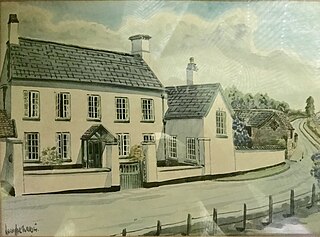
Gulliford Farm is a Grade-II listed Tudor manor farm in East Devon, between Exmouth and Topsham. It is situated in the village of Exton, in the parish of Woodbury. Whilst parts of the out-buildings date back to the 14th Century, the majority of outbuildings date from the early 18th Century, and the main residential building dates to the 16th Century with later Georgian and Victorian additions and editions. The house and farm were held as Part of the Nutwell Estate until 1941, when it was bought by its long-term occupants, the Hallett family, under W.B. Hallett. The farm retired in 1989, following the death of the owner, W. Geoffrey Hallett.




